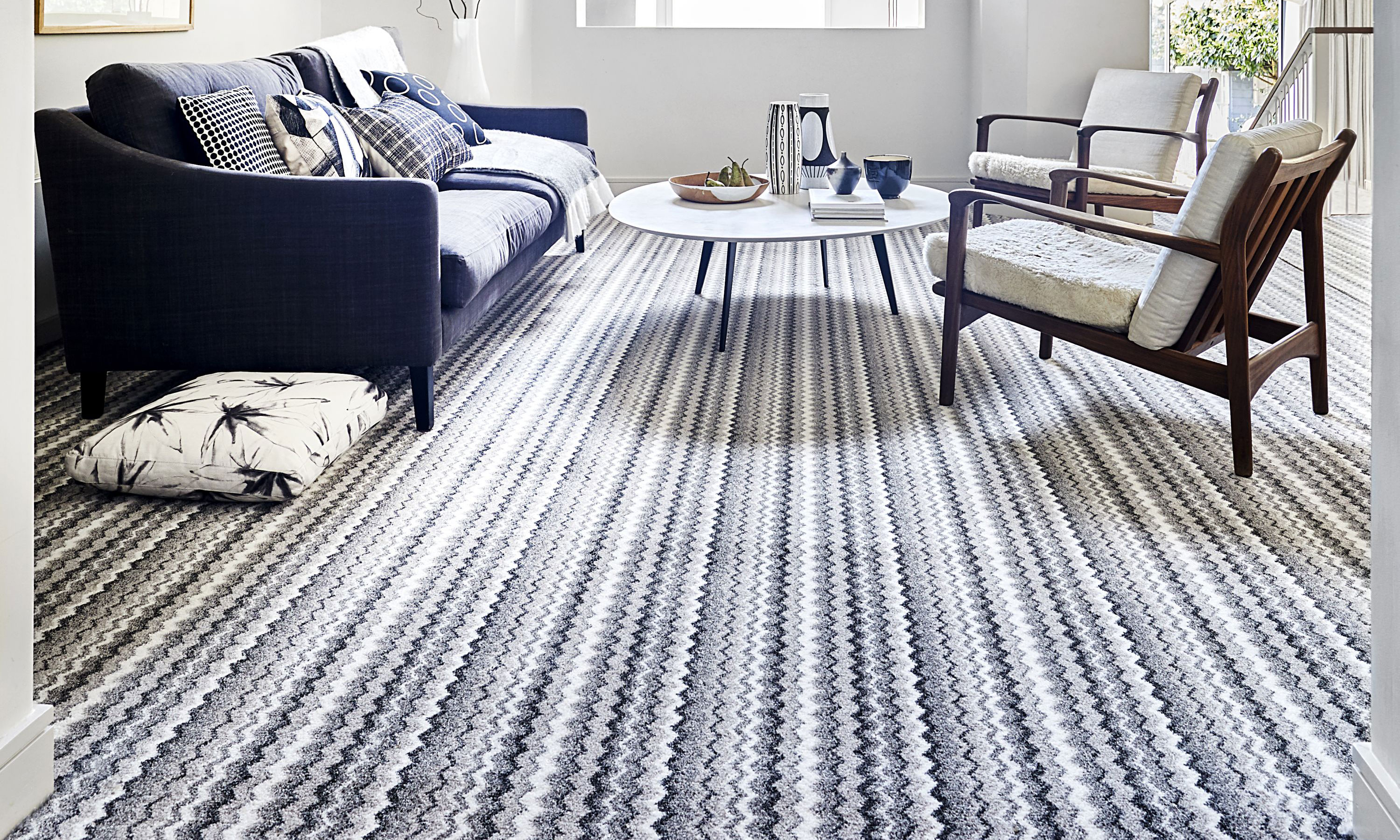

Carpet is a warm and comfortable flooring for your home, so it’s no wonder so many of us choose it. But if you’re thinking of buying yours new, you might be wondering how to install carpet yourself – and whether it's a job that you can DIY, or if professional installation is the best route to take.
The answer is that it is possible to lay carpet yourself, although you should bear in mind that it does require special tools. You could lay a brand new carpet, or you might alternatively want to re-use an existing fitted carpet from somewhere else as a change to the other types of flooring you have in your home.
How easy is it to lay carpet yourself?
Installing carpet isn’t very difficult, but getting the same finished effect as professional installers would is the key and there are a number of factors involved in this. No matter what type of carpet you've chosen.
First, you’ll need the right tools for the job, and it’s important that you add to your existing toolkit with specialist carpet tools to get good results. Renting them is likely to be the best option as they are costly to buy.
Secondly, bear in mind that laying a carpet yourself will take some time, so be prepared to set this aside.
Don’t forget that you will often need to take out an old carpet first, and disposing of it, along with moving all the furniture necessary. If you call on professional installers, they will often do all these jobs for you – and be quick about it.
Be mindful that carpet padding (underlay) should be used under carpet, which helps it fit well, and last longer, and it’s best to install new padding with a new carpet, so there’s this part of the process to take into consideration as well.

How to install carpet
1. Prepare the room
Fix tack strips (gripper strips) around the perimeter of the room (tacks pointing towards the wall) by nailing them down. They shouldn’t be right against the wall as the carpet will be tucked into this space. Leave a space that’s slightly less than the thickness of the carpet.
2. Install the underlay
Put down the padding (underlay) so it will be perpendicular to the direction of the carpet. Start in a corner, and make sure the end and the side are lying against the tack strips. It should not be over them. Cut to fit and then continue with the next width beside the first.
Use a staple gun to fix the padding in place, including along the inside edge of the tacking strip.
3. Cut the carpet to size
Cut the carpet to size, leaving an allowance of 4 inches (100mm) on all sides. Patterned carpet? Allow extra for pattern matching.
4. Lay your carpet in the right direction
Roll out the carpet, starting from one corner, and leaving excess against the wall on each side. Line up edges to make seams if necessary.
5. Start to fit the carpet
Put seaming tape on the floor underneath any seams and use a seaming iron to heat the tape then stick carpet to the tape. Seal with a carpet roller. Start to fix the carpet using a knee kicker, starting from the corner of the room and working along one wall.
6. Pull it taut
Use the knee kicker to stretch the carpet so it’s taut and attach it to the tack strips on the other side of the room. Continue around the room, stretching the carpet and fixing it on to the tacks.
7. Trim and finish
Trim the carpet using a trimming tool or box cutter. Then use a carpet tucking tool to push the carpet into the space between the tack strip and the baseboard.
Which direction should you lay carpet?
You should lay carpet so that the pile lies in the same direction from piece to piece. Check the way the pile lies in good light, looking from different directions to be sure.
As to which direction it should lay overall, it’s generally recommended that the pile lays towards the entrance to the room.
If you have to seam two pieces of carpet with pattern, make sure you match the pattern. Add 10 per cent when buying patterned carpet for your room to permit you to do this successfully.
Can you install carpet without a stretcher?
You could install carpet without a stretcher – but you shouldn’t because you’ll end up with a carpet with lumps and wrinkles. You should always get a stretcher if you want professional-looking results when you are laying a carpet. This applies even if you are re-using a carpet in a different place even though it has already been stretched once.
Join our newsletter
Get small space home decor ideas, celeb inspiration, DIY tips and more, straight to your inbox!

Sarah is a freelance journalist and editor writing for websites, national newspapers, and magazines. She’s spent most of her journalistic career specialising in homes – long enough to see fridges become smart, decorating fashions embrace both minimalism and maximalism, and interiors that blur the indoor/outdoor link become a must-have. She loves testing the latest home appliances, revealing the trends in furnishings and fittings for every room, and investigating the benefits, costs and practicalities of home improvement. It's no big surprise that she likes to put what she writes about into practice, and is a serial house revamper. For Realhomes.com, Sarah reviews coffee machines and vacuum cleaners, taking them through their paces at home to give us an honest, real life review and comparison of every model.